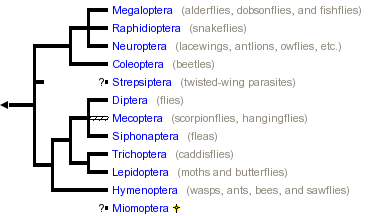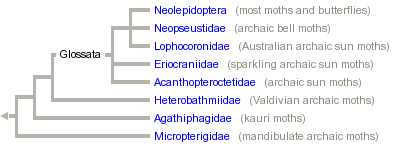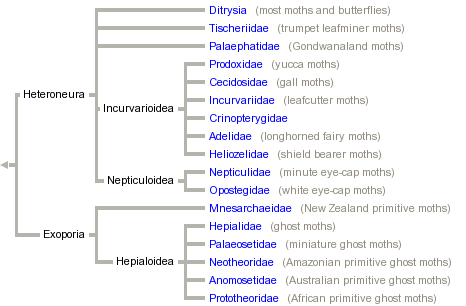Swallow Hard Fred, its a caterpillar!
Fred Reed, right-wing creationist hero of the moment asked what he imagined to be hard questions that challenge the validity of evolutionary biology. They are actually rather tired and often answered “problems.” When confronted with any creationist making bold pronouncements, one should first look in The Index of Creationist Claims, or Creationist Lies and Blunders. That will take care of a majority of their so-called “evidenecs.” Several of Reed’s arguments have been debunked here already; The Neck of the Giraffe, and How I Spent My Morning.
The key appeal of the Fred Reeds of the world is that they are ignorant, and lazy. It is neither a shame nor a crime to be ignorant, we are all born totally ingnorant. It is not a crime to be lazy, but it is a waste of ability. And true enough, it is not a crime to be ignorant and lazy, nor should it be even abstractly. But what chafes my butt is that I am actually forced to pay thousands of dollars a year on “professional liability insurance” because I am legally acknowledged as an expert in certain areas, and people, and courts of law, and corporations pay me cash money to provide them with my professional expert opinion. The salt in the wound is that ignoramuses like Fred Reed can promote their inanities without liability. Something to do with the First Amendment freedom of speech ‘guarantee.’ Nothing is ever truly secure and ironically the seperation of Church and State also ‘guaranteed’ in the First Amendment is under attack by the far-right. Because he isn’t an expert at anything, and even stressed that he doesn’t know what he is writing about, Fred’s not accountable for his false statements. This is a classic example of ‘buyer beware.”
Fred Reed, and echoed by one of our local creationist pests, DaveScot, have also promoted insect metamorphosis and a “big” problem unexplained by science. There are many textbooks on insects, and evolution, and developmental biology of near a thousand pages a piece (some of which I’ll refer to below). There are also thousands of individual journal publications, many highly specialized. (Highly specialized means that I could hardly tell what they were about, and neither Fred nor Dave would have any clue at all. Otherwise, as honest and dillignet scholars they would have already read them all. Yeah, sure). Creationists count on that massive gap between what is known by science and even the literate public. {A personal note here: I come from a family which ranges from illiterates to doctorates. For example, my dear Grandmother couldn’t finish the sixth grade in 1908 because the family buggy lost its axle when their horse spooked one morning. She was never to return to school. I am not making fun of those less educated, Fred is far better educated than many of my kin. Therefore, he should be held far more accountable for willful ignorance}.
Anyway Fred, just for openers, not all insects undergo metamorphosis and to start your ‘argument’ with the highly evolved lepidoptera (critters with caterpillars) is lamebrained at best.
Endopterygota: Insects with complete metamorphosis
Insects undergoing Metamorphosis





Follow the tree, dofus. The evolution of metamorphosis started way way back, not just at the very end.
An additional, and a bit easier to follow for beginners, version is available a Kendall Bioresearch Services: Insect Taxonomy - Agroecology - Biometrics - Expert Witness. Some people might be surprised at the “expert witness” category for Dr David A Kendall’s consulting entomology practice, but entomologists are significant members of the forensic science community which reaches far beyond the popular TV shows like “CSI: where-ever” (which are commended for at least making a decent effort of being scientifically acurate). This rather gives lie to the “would you convict someone based on this evidence?” argument we sometimes see from creationists. Yes, we would- and jury verdicts prove it!
And I think that good start for little kids, Fred Reed, and our local eartick, DaveScot, is INSECT CHARACTERISTICS: METAMORPHOSIS: Growing Up. Good advice as well.
Next, consider a popular introductory college level textbook, The Insects: An Outline of Entomology Third Edition By: Penny Gullan, and Peter Cranston, University of California, Davis published by Blackwell, inc. They only devote one out of 17 chapters to issues relating explicitly to insect evolution. Why? Because there is no time to waste on issues that are already long resolved in general, and far too complex in the details specified by specialists devoted to minutiae.
Another example with a bit more supplemental data is the chapter on Insect Metamorphosis found in the exemplary textbook Developmental Biology, Seventh Edition by Scott F. Gilbert, published by Sinauer Associates. I strongly recommend the DivBio website, and consideration of Prof. Gilbert’s textbook for adoption.
Fred Reed, “Or consider caterpillars. A caterpillar has no obvious resemblance to a butterfly. The disparity in engineering is huge. The caterpillar has no legs, properly speaking, certainly no wings, no proboscis.”
This is the first very ignorant thing Fred has to say on the subject. Oh, it is of course the first thing Fred has to say on the subject. Caterpillars of course have legs. In fact, most have multiple sets of legs which are developmentally differentiated. I currently have at least 6 species of insect larva crawling around the front yard, and I just checked. Fred could too. In the entomology literature, these are often referred to as “protopodia” (those which undergo the least metamorphosis and typically different structurally from the other larval leg sets, plus are typically the front 3 pairs), and “pseudopodia” (those expressed on larval body segments that are not conserved in later stages). There is also an obvious evolutionary relationship here: the “protopodia” are conserved (that means ‘retained’ Fred) through all insect larva to adults. And they are not “engineered” Fred; that is called “assuming your conclusion.” It is a creationist “dead giveaway.” Remember you are pretending not to be a creationist?
Back to Fred, “How did a species that did not undergo metamorphosis evolve into one that did? Pupating looks like something you do well or not at all: If you don’t turn into something practical at the end, you don’t get another chance.
This is a more subtle error. The butterflies Fred has based his ‘shattering’ critique on are at the near end of an evolutionary trajectory of over 450 million years. The answer, of course, lies in the far end of this trajectory.
Think about this. The ancestor of a modern caterpillar necessarily was something that could reproduce already. To get to be a butterfly-producing sort of organism, it would have to evolve silk-extruding organs, since they are what you make a cocoon with. OK, maybe it did this to tie leaves together, or maybe the beast resembled a tent-caterpillar. (Again, plausibility over evidence.) Then some mutation caused it to wrap itself experimentally in silk. (What mutation? Are we serious?) It then died, wrapped, because it had no machinery to cause it to undergo the fantastically complex transformation into a butterfly. Death is usually a discouragement to reproduction.
Fred might have “thought” when he should have studied. First, butterflies don’t produce a silk cocoon, although some moths do. And even many moths don’t produce a silk cocoon and rely on a dried mucus chrysalis much like that of the butterfly. Some have a bit of both; a mucus chrysalis suspended loosely by a silk webbing. They all burst their enclosure simply by growing- and that growth is achieved by more by rearangement than by addition of new cells. A well known (but not to creationists) fact is that all insect larva store large amounts of fat prior to metamorphosis to feed the necessary cell growth and rearrangement.
Tell me how the beast can gradually acquire, by accident, the capacity gradually to undergo all the formidably elaborate changes from worm to butterfly, so that each intermediate form is a practical organism that survives. If evolutionists cannot answer such questions, the theory fails.
This is just stupid, Fred. Insect larva are not worms. Worms do not undergo metamorphosis to emerge as insects. There are obvious evolutionary links between the segmented “worms” and insects, but you will need to start with understanding some basics first. You are still restricted to the shalow end of the pool. Next, evolution of advanced organisms is not the product of “accident.” The technical use of the idea of “random” which Fred bastardized with the term “accident” referred to chemical events which are in of themselves not merely by chance (see; Jeffrey S. Wicken, 1979 The Generation of Complexity in Evolution: A Thermodynamic and Information-Theoretical Discussion, Journal of Theoretical Biology, Vol. 77 (April ), p. 349, or Kauffman, Stuart A. 1993 The Origins of Order: Self -Organization and Selection in Evolution Oxford: Oxford University Press).
Finally Fred, your gross ignorance has little to do with the success or failure of biological science. At worst, you and you pro-ignorance fellows will drive science off shore like the rest of America’s lost manufacturing employment base.
Here the evolutionist will say, “Fred, caterpillars are soft, squashy things and don’t leave good fossils, so it’s unreasonable to expect us to find proof.”
There are fossil data, but the more significant is the current, living species data. What is stupid of Fred is to ask for detailed fossil data from organisms that don’t fossilize well.
Some of the current literature that Fred should have become very familiar with before poping off is:
JAMES W. TRUMAN AND LYNN M. RIDDIFORD 1999 “The origins of insect metamorphosis” Nature 401, 447 - 452 (30 September 1999)
Abstract: Insect metamorphosis is a fascinating and highly successful biological adaptation, but there is much uncertainty as to how it evolved. Ancestral insect species did not undergo metamorphosis and there are still some existing species that lack metamorphosis or undergo only partial metamorphosis. Based on endocrine studies and morphological comparisons of the development of insect species with and without metamorphosis, a novel hypothesis for the evolution of metamorphosis is proposed. Changes in the endocrinology of development are central to this hypothesis. The three stages of the ancestral insect species–pronymph, nymph and adult–are proposed to be equivalent to the larva, pupa and adult stages of insects with complete metamorphosis. This proposal has general implications for insect developmental biology.
Note that in the last 7 years, a great deal more has been added to the information from the above publication. For example,
Donning, Daryl P. “Metamorphosis and Evolution.” NCSE Reports 14 (2) 11.
James W. Truman, Lynn M. Riddiford 2002 “ENDOCRINE INSIGHTS INTO THE EVOLUTION OF METAMORPHOSIS IN INSECTS” Annual Review of Entomology Vol. 47: 467-500 (Volume publication date January 2002) (doi:10.1146/annurev.ento.47.091201.145230)
Shanavas A, Arif A, Murthy CRK, Dutta-Gupta A 2004 “Developmental and hormonal regulation of actin and tubulin in the central nervous system of silkworm, Bombyx mori during postembryonic development” CURRENT SCIENCE 87 (3): 383-388 AUG 10 2004
Erezyilmaz DF, Riddiford LM, Truman JW 2004 “Juvenile hormone acts at embryonic molts and induces the nymphal cuticle in the direct-developing cricket” DEVELOPMENT GENES AND EVOLUTION 214 (7): 313-323 JUL 2004
Abstract: During embryogenesis of hemimetabolous insects, the sesquiterpenoid hormone, juvenile hormone (JH), appears late in embryogenesis coincident with formation of the first nymphal cuticle. We tested the role of embryonic JH by treating cricket embryos with JH III, or the JH-mimic (JHM) pyriproxifen, during early embryogenesis. We found two discrete windows of JH sensitivity. The first occurs during the formation of the first (E1) embryonic cuticle. Treatment with JHM prior to this molt produced small embryos that failed to complete the movements of katatrepsis. Embryos treated after the E1 molt but before the second embryonic (pronymphal) molt completed katatrepsis but then failed to complete dorsal closure and precociously formed nymphal, rather than pronymphal characters. This second sensitivity window was further assessed by treating embryos with low doses of JH III prior to the pronymphal molt. With low doses, mosaic cuticles were formed, bearing features of both the pronymphal and nymphal stages. The nymphal characters varied in their sensitivity to JH III, due at least in part to differences in the timing of their sensitivity windows. Unexpectedly, many of the JH III-treated embryos with mosaic and precocious nymphal cuticles made a second nymphal cuticle and successfully hatched. JH treatment also affected the growth of the embryos. By focusing on the developing limb, we found that the effect of JH upon growth was asymmetric, with distal segments more affected than proximal ones, but this was not reflected in misexpression of Distal-less or Bric-a-brac, which are involved in proximal-distal patterning of the limb.
Note: Those above are only ones I have, and have read. There are many many more. As I am far from an expert, and would never presume to publish an independent opinion a la our boy Freddy that there is no data regarding insect evolution that could explain metamorphosis, it is the responsibility of the “freddies” for analysis and to counter these scientific studies of which they are so ignorant.
Even obsolete references serve to refute Fred Reed and his creationist compadres:
Metamorphosis: Postembryonic Reprogramming of Gene Expression in Amphibian and Insect Cells. LAWRENCE I. GILBERT, JAMSHED R. TATA, AND BURR G. ATKINSON, eds. Academic Press. 1996. 687 pages. $125.00. ISBN 0-12-283245-0.
reviewed : in American Zoologist, Feb 1997 by H Frederik Nijhout and presented online today.
Much of the difficulty in understanding the role of JH in metamorphosis no doubt arises from the fact that metamorphosis and its endocrine control have undergone significant evolutionary divergence and specialization. Features that apply to one taxon are not fully generalizable to others. In the opening chapter Sehnal et al. make the case that the key to understanding the diversity and evolution of metamorphosis and its endocrine control lies in a comparative cladistic analysis of endocrine and developmental mechanisms. They are obviously correct. The remainder of this volume, preoccupied with molecular details of model systems and eschewing a comparative approach, suggests that the community of developmental endocrinologists is not yet ready to hear this plea. But the development Sehnal et al. call for is inevitable, because once we are done describing the shared primitive characters of the molecular mechanisms of metamorphosis we will be forced to deal with the things that make animals different, both in development and in evolution. We look forward to descriptions of such studies in Metamorphosis IV, which should appear in about 2010.
Fred again: “I see the problem. But it is unreasonable to expect me to accept something on the grounds that it can’t be proved. Yes, it is possible that an explanation exists and that we just haven’t found it. But you can say that of anything whatever. Is it good science to assume that evidence will be forthcoming because we sure would like it to be? I’ll gladly give you evidence Wednesday for a theory today?
Fred, you have not the least valid interest in biology, otherwise you would have learned a little bit about it before opening your mouth so wide. You clearly haven’t. You have swallowed a load in the back of the throat from creationist ignorance peddlers.

Swallow hard, boy- you begged for it.
